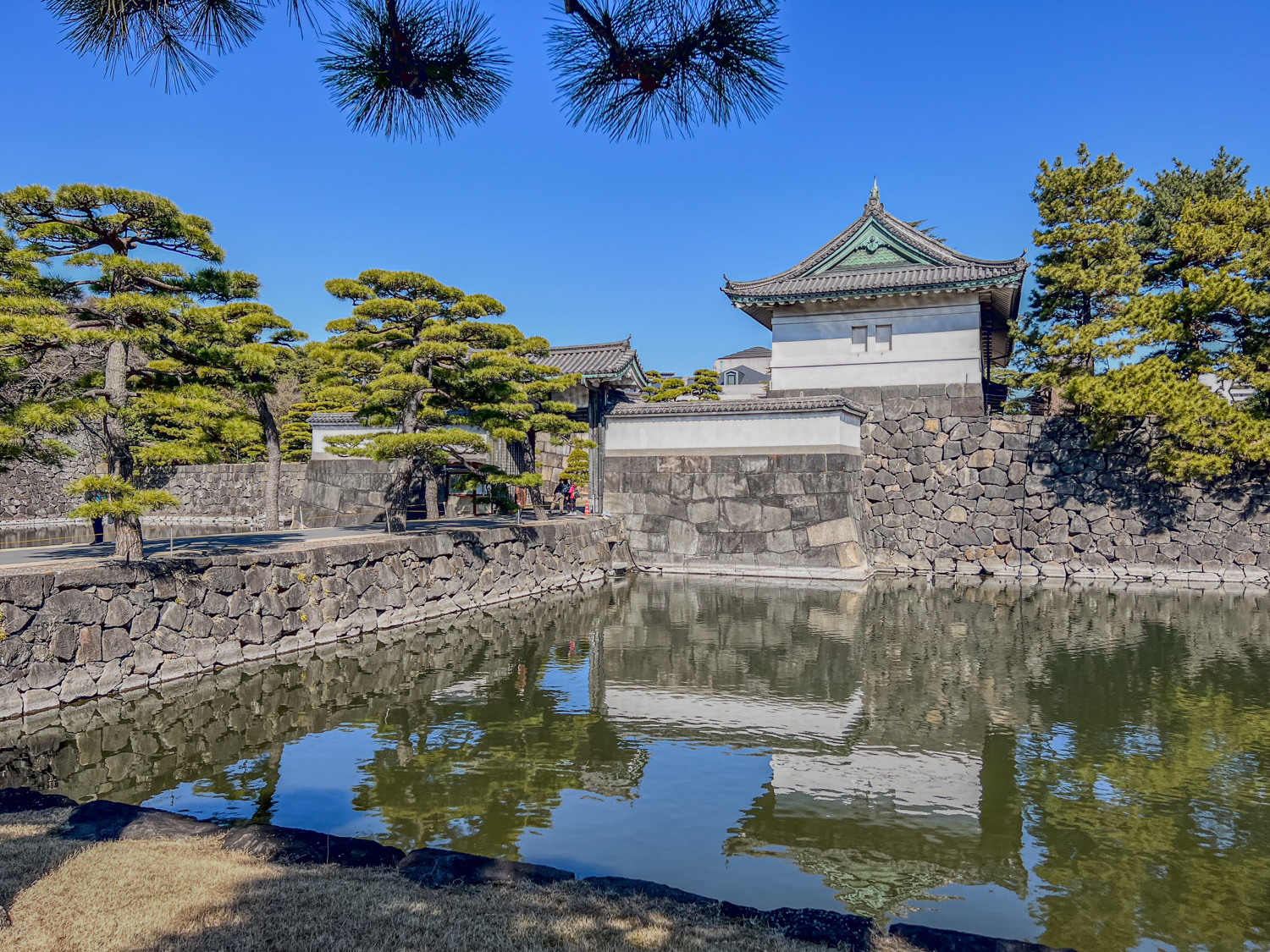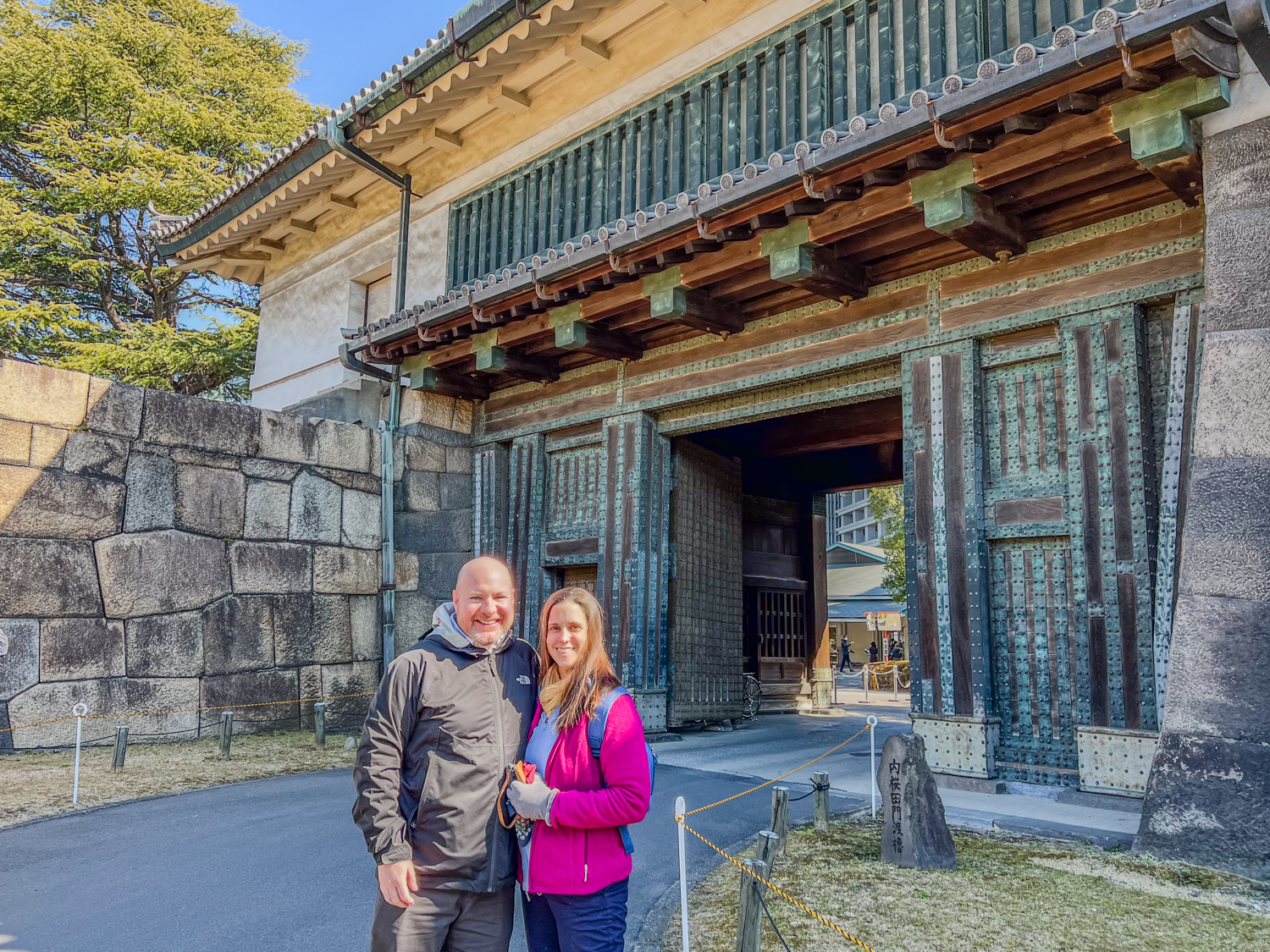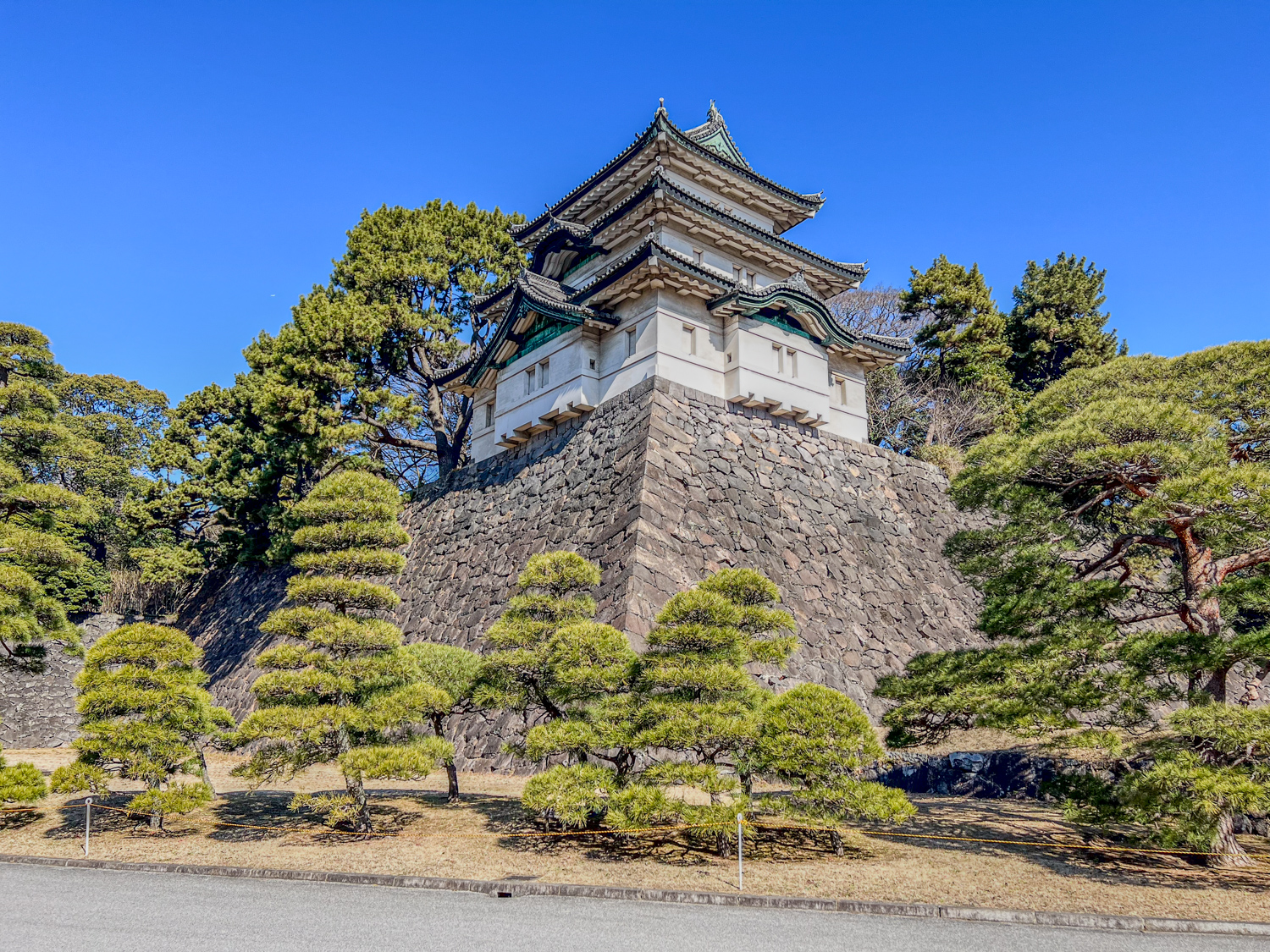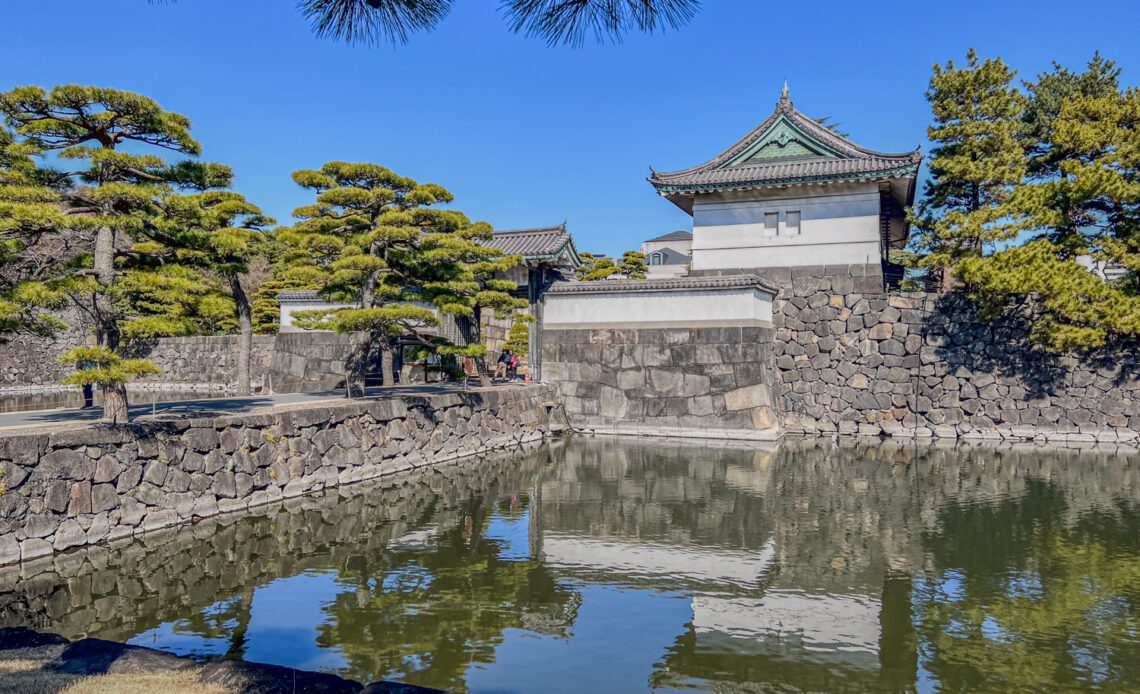Japan’s Imperial Palace in central Tokyo has been the official home for Emperors since 1868; visitors can experience it up close on a free guided tour.
The Imperial Palace stands on the site of Edo Castle (est. 1457), a symbol of Japanese history and the seat of power for the Tokugawa shogunate during the Edo period (1603-1868).

When Emperor Meiji moved the capital from Kyoto to Tokyo in 1868, the castle transformed into the Imperial Palace, the residence of Japan’s Imperial Family.
It’s a testament to Japan’s enduring monarchy, one of the oldest in the world, and represents the cultural and historical continuity of the nation amid rapid modernization and change.
In this article, I’ll share my experience of touring the Imperial Palace for free on my second trip to Tokyo and how you can do the same.
Touring the Imperial Palace


Kel and I hit the breakfast buffet early at the Hilton Tokyo before walking to Shinjuku train station for the ride to Tokyo Station, a few blocks east of the Imperial Palace.
I wanted Kel to experience the impressive Tokyo subway system at least once during our brief stay en route from Vietnam to Texas.
The Imperial Palace, with its moats and gardens, covers a massive 280 acres in the center of Chiyoda City, a district in the middle of Tokyo.
We arrived at the parking lot outside the Kikyo-mon Gate by 9 a.m. and received a numbered ticket (#56) for the morning’s free tour.
Due to work schedules, our only opportunity to see the palace grounds together was that morning. Since we had no idea of the demand for these free tours, we were grateful to have gotten there early enough.
At 9:30 a.m., the staff began collecting the tickets, and the free 90-minute tour of the Imperial Palace began near the East Gardens with a walk across the first of several bridges and through the Kikyo-mon Gate.
The large stone walls of the gate and inside the palace grounds reminded us of the Inca walls of Machu Picchu.
Fujimi-yagura


The Fujimi-yagura, also known as the “Mt. Fuji-viewing tower,” is one of the few remaining watchtowers of the original Edo Castle, which now forms part of the Tokyo Imperial Palace complex.
This three-story tower holds significant historical and architectural value. It is strategically located on the castle’s northeastern corner, a spot traditionally believed to be vulnerable to…
Click Here to Read the Full Original Article at GoBackpacking…
